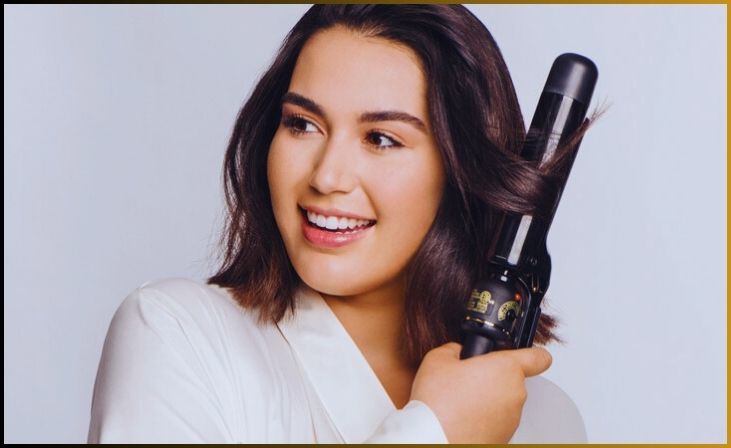Frizzy Hair is the unwelcome guest that many of us are all too familiar with. It has a knack for appearing when we least expect it, turning our carefully styled hair into a wild and unruly mess. Whether your hair is naturally curly, wavy, or straight, managing frizz on a daily basis can be a challenging feat. The good news is that you don’t have to let frizz control your hair or your confidence. With the right techniques and products, you can tame the frizz and enjoy smooth, sleek, and beautifully managed locks every day.
In this blog, we’ll explore eight invaluable tips to help you conquer frizz in your daily hair care routine. From the importance of hydration and product selection to the choice of styling tools and embracing your hair’s natural texture, we’ll cover everything you need to know to bid farewell to frizz. So, say goodbye to the frizz-related frustrations and say hello to your best hair days with these practical tips for managing frizzy hair on a daily basis.
Causes of Frizz
Frizz is a common hair woe, but to effectively manage it, it’s essential to understand what causes it. Several factors contribute to those pesky flyaways and unruly strands, and recognizing these culprits can be the first step in taming frizz.
- Humidity: One of the primary instigators of frizz is humidity. Moisture in the air penetrates the hair shaft, causing it to swell and resulting in frizz. For those with curly or wavy hair, the impact of humidity can be particularly significant.
- Hair Type: Your hair type plays a crucial role in frizz. People with naturally curly or coarse hair are more prone to frizz due to the structure and texture of their hair. Straight hair can also experience frizz, especially in high-humidity conditions.
- Damage: Damaged hair is more likely to be frizzy. Split ends, rough cuticles, and the loss of natural oils can lead to hair that’s unruly and difficult to manage. Frequent heat styling, chemical treatments, and exposure to environmental stressors contribute to damage.
- Product Buildup: Overusing or incorrectly applying hair care products can lead to product buildup. This not only makes hair appear greasy but also causes it to trap moisture, resulting in frizz.
- Static Electricity: In dry conditions, static electricity can make hair stand on end. While this is a temporary form of frizz, it can be frustrating and challenging to control.
Also Read- 12+ Stunning Hairstyle Ideas for All Special Occasions
Tips for Managing Frizzy Hair
Discover effective strategies to keep frizz at bay and maintain beautifully smooth, sleek, and manageable hair every day. From proper hydration to the right styling tools, these tips will help you conquer frizz-related challenges with confidence.
1. Hydration is Key
Hydration is a fundamental step in the battle against frizzy hair. When your hair is well-hydrated, it’s better equipped to withstand environmental factors that contribute to frizz, such as humidity. To ensure your locks remain moisturized, opt for a shampoo and conditioner designed to provide hydration and nourishment. Additionally, incorporate a hydrating hair mask into your routine on a weekly basis to infuse your hair with essential moisture. By keeping your hair properly hydrated, you create a strong foundation for a frizz-free and sleek appearance.
2. Microfiber Towels and Cotton T-Shirts
Ditch the traditional bath towel and embrace the gentle touch of microfiber towels or soft cotton t-shirts to combat frizz. Regular towels can be rough on your hair, causing friction that leads to frizz and breakage. Microfiber towels and cotton t-shirts are kinder to your locks. They help absorb excess moisture after washing without the abrasive effects of regular towels. To minimize frizz, gently wrap your hair in a microfiber towel or t-shirt for a few minutes after your shower. This simple switch in drying tools can make a significant difference in your daily battle against frizz, leaving your hair smoother and more manageable.
3. Avoid Excessive Heat Styling

Excessive heat styling can be a major contributor to frizz. Heat from blow dryers, flat irons, and curling irons strips your hair of its natural oils, making it more prone to dryness and frizz. To combat this, consider reducing your reliance on heat styling whenever possible. Opt for air-drying your hair, especially on lower heat and cool settings, to preserve its natural moisture balance. If you must use heat styling tools, be sure to apply a heat protectant spray first to shield your hair from damage. By giving your hair a break from excessive heat, you not only maintain its health but also reduce the likelihood of frizz making an appearance in your daily routine.
4. Product Selection Matters
Your choice of hair care products plays a crucial role in managing frizz effectively. To combat frizz, invest in quality anti-frizz serums or oils that can be applied to your hair after washing. These products help seal the hair cuticle, reducing the chances of moisture penetrating and causing frizz. Additionally, consider using leave-in conditioners or styling creams that are specifically designed to combat frizz. Look for products that are sulfate-free, as sulfates can strip your hair of its natural oils, making it more prone to frizz. By carefully selecting the right products for your hair, you create a strong defense against frizz, ensuring that your locks remain smooth and manageable.
5. Regular Trims
Regular trims are a secret weapon in the battle against frizz. Split ends and damaged hair are more likely to become unruly and frizzy. By scheduling trims every 6-8 weeks, you can maintain the health of your hair and prevent frizz from taking over. Trimming not only helps keep the ends of your hair neat and free from damage but also ensures that your haircut remains well-defined. Even if you’re in the process of growing out your hair, a small, strategic trim can make a big difference in keeping frizz at bay and ensuring your hair looks its best on a daily basis.
6. The Right Brush and Comb
Selecting the right hairbrush and comb is a critical step in managing frizz effectively. For detangling wet hair without causing frizz, opt for a wide-tooth comb. It gently separates the strands without causing damage. Additionally, consider using a boar bristle brush, which is excellent for evenly distributing your hair’s natural oils from your scalp to the ends. This distribution of natural oils helps to keep your hair well-hydrated and reduces the likelihood of frizz. By choosing the appropriate brushes and combs for your hair type and styling needs, you can minimize damage and maintain a smoother, frizz-free appearance.
7. Sleep on Silk or Satin

The material of your pillowcase can significantly impact the level of frizz in your hair when you wake up in the morning. Cotton pillowcases can create friction, leading to hair that’s less smooth and more prone to frizz. To counter this, consider making the switch to silk or satin pillowcases. These materials are incredibly gentle on your hair, reducing friction as you sleep. As a result, you’ll find that your hair maintains its smoothness, and you wake up with a more controlled and sleek appearance. It’s a simple change that can make a noticeable difference in your daily battle against frizz, helping you enjoy more manageable hair with minimal effort.
8. Humidity-Resistant Styling
In areas with high humidity, keeping frizz under control can be especially challenging. Humidity has a way of causing hair to become unruly and frizzy. To combat this, opt for hairstyles and products that are humidity-resistant. Hairstyles like braids, buns, and updos can help keep your hair under control on humid days. Additionally, look for anti-humidity hair sprays or gels designed to seal your style and protect it from the effects of moisture in the air. These products create a barrier that helps your hair maintain its sleek appearance, even in the most humid conditions. By incorporating humidity-resistant styling techniques and products into your routine, you can confidently face any weather and keep frizz at bay.
For More- Unlocking the Perfect Hairstyles for Different Face Shapes
Conclusion
Frizzy hair doesn’t have to be an everyday struggle. With these eight invaluable tips for managing frizz on a daily basis, you can regain control over your locks and enjoy sleek, smooth, and beautifully managed hair. Whether it’s through proper hydration, gentle drying techniques, or the use of the right products and tools, these strategies are your secret weapons against the relentless battle with frizz. Remember that embracing your natural texture and making thoughtful choices in your daily hair care routine can transform your hair into a sleek and confident accessory. Say goodbye to frizz-related frustrations and hello to your best hair days, every day.
FAQs
Using a hydrating hair mask once a week is generally sufficient, but you can adjust the frequency based on your hair’s needs and your climate.
Yes, air-drying is an excellent option for managing frizz. Apply anti-frizz products before drying to achieve a sleek look.
Typically, apply products from lightest to heaviest. Start with leave-in conditioner or anti-frizz serum and finish with styling products.
Silk or satin pillowcases minimize friction, but you can also wrap your hair in a silk scarf or bonnet before bedtime.
Both work well for managing frizz. Serums tend to be lighter and absorb quickly, while oils provide deep hydration and are suitable for thicker hair.

